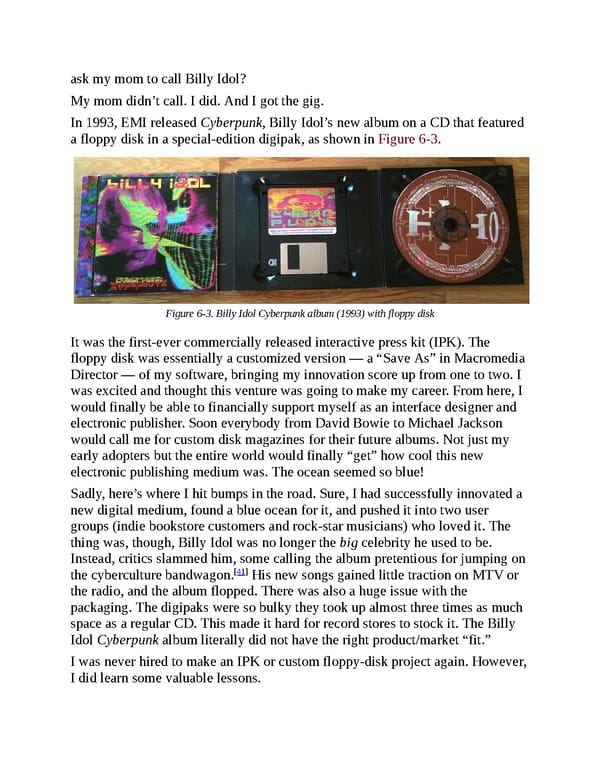ask my mom to call Billy Idol? My mom didn’t call. I did. And I got the gig. In 1993, EMI released Cyberpunk, Billy Idol’s new album on a CD that featured a floppy disk in a special-edition digipak, as shown in Figure 6-3. Figure 6-3. Billy Idol Cyberpunk album (1993) with floppy disk It was the first-ever commercially released interactive press kit (IPK). The floppy disk was essentially a customized version — a “Save As” in Macromedia Director — of my software, bringing my innovation score up from one to two. I was excited and thought this venture was going to make my career. From here, I would finally be able to financially support myself as an interface designer and electronic publisher. Soon everybody from David Bowie to Michael Jackson would call me for custom disk magazines for their future albums. Not just my early adopters but the entire world would finally “get” how cool this new electronic publishing medium was. The ocean seemed so blue! Sadly, here’s where I hit bumps in the road. Sure, I had successfully innovated a new digital medium, found a blue ocean for it, and pushed it into two user groups (indie bookstore customers and rock-star musicians) who loved it. The thing was, though, Billy Idol was no longer the big celebrity he used to be. Instead, critics slammed him, some calling the album pretentious for jumping on [41] the cyberculture bandwagon. His new songs gained little traction on MTV or the radio, and the album flopped. There was also a huge issue with the packaging. The digipaks were so bulky they took up almost three times as much space as a regular CD. This made it hard for record stores to stock it. The Billy Idol Cyberpunk album literally did not have the right product/market “fit.” I was never hired to make an IPK or custom floppy-disk project again. However, I did learn some valuable lessons.
 UX Strategy: How to Devise Innovative Digital Products that People Want Page 144 Page 146
UX Strategy: How to Devise Innovative Digital Products that People Want Page 144 Page 146